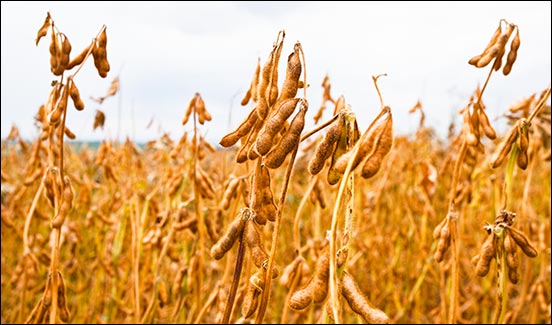HEALTH & NUTRITION...

On Target
Weaning diet options.
Depending on rainfall and temperatures, spring-calving herds may be weeks or months away from weaning. For many operations, that will bring the challenge of feeding weaned calves for a short transition period. That’s when nutrition is critical to end-product quality, because it influences both marbling development and calf health, which in turn also affects later quality grade. You may find local forages in short supply if your herd has had to deal with hot, dry weather this summer. One of the few “opportunities” that presents is evaluating alternative forage-feeding strategies that may otherwise go untried.
Read more.
Limit-feeding Backgrounding Calves
K-State Research and Extension offers research insight into successfully limit-feeding calves.
Kansas State University (K-State) Beef Cattle Nutritionist Dale Blasi shares research on using coproducts in a limit-fed diet for backgrounding calves. The researchers found a 27% improvement in feed efficiency compared to full-fed cattle, with additional environmental benefits. Watch the video to learn more.
Watch for New Tick
Invasive East Asian tick confirmed in six states from New York to Arkansas.
Confirmed reports of the longhorned tick, Haemaphysalis longicornis, in six states have prompted a Texas A&M AgriLife Extension Service entomologist to alert livestock producers to its possible arrival.
Sonja Swiger, AgriLife Extension veterinary/medical entomologist at Stephenville, said the longhorned tick isn’t named for the iconic bovine symbol of the Lone Star State, but rather for the distinctive, but underrated “horns” sprouting from a portion of its head.
“This tick is a relative newcomer to the United States, and though it has not been confirmed here in Texas, it has been confirmed in Arkansas,” she said. “It’s not at all choosy about who or upon what mammal it feeds on or who it dines with, as it has been found feeding right alongside other external parasites.” Read more.
Add Quality to Forage
Adding legumes to grass pastures adds quality to the forage.
Adding legumes to grass pastures or hay fields supplies nitrogen to the soil and reduces the need for chemical fertilizers, as well as adding quality to the forage.
Anowar Islam, associate professor and agroecologist in the Department of Plant Sciences at the University of Wyoming, has been conducting a number of research trials on legumes and grasses in various locations around Wyoming. He started one study in 2009 that is ongoing at different locations and elevations to identify optimum seeding ratios of grass and legumes for improved forage yields, quality and stand persistence.
Read more.
Advantages of Grass-Legume Mixes
Research projects in many states have looked at the possible advantages of grass-legume mixtures for hay and pasture.
Kevin Sedivec, professor of range science at the North Dakota State University, has done several trials on grass-alfalfa mixes.
“What works in the Northern Plains is sometimes different than in other areas. We have only two grasses that grow really well with alfalfa, that allow us to get two cuttings per season of a grass-alfalfa mix. These are meadow brome grass and orchard grass. Both will regrow with alfalfa for a second cutting,” he says. “Tall fescue will also do this — but we don’t grow tall fescue this far north. Until there’s a good variety that won’t winter-kill, I can’t recommend it here.” Read more.
Ancient Anthrax
Ancient disease just keeps cropping up.
Anthrax is one of the oldest killers. It occurs sporadically in the United States and Canada, causing sudden death of cattle and sheep, though it can infect any warm-blooded animal.
This acutely contagious and deadly disease is usually not spread from live animal to live animal, except by flies that bite a sick animal and then bite a healthy one. It is typically transmitted via spores found in carcasses of animals that died of the disease.
Read more.
Dealing with Snakebite
Snakebite is sometimes a serious problem in livestock. Here are tips on dealing with bites.
The rattlesnake is the most common poisonous snake in the United States, but there are several other pit vipers, including copperheads and cottonmouths (also called water moccasins), that can be dangerous. Rattlesnakes give some warning when an animal approaches, but copperheads may just try to hide — and the animal might step on them and get bitten.
The danger/potency of a bite depends on the amount of venom injected by the snake and the type of toxin, which can vary depending on the species or variety of snake.
Read more.
Cattle Diseases: Common Conditions/Terms
Click here for a list of common conditions and terms related to beef cattle diseases, such as anaplasmosis, brucellosis, BVD, E. coli, IBR and others.
[Click here to go to the top of the page.]






